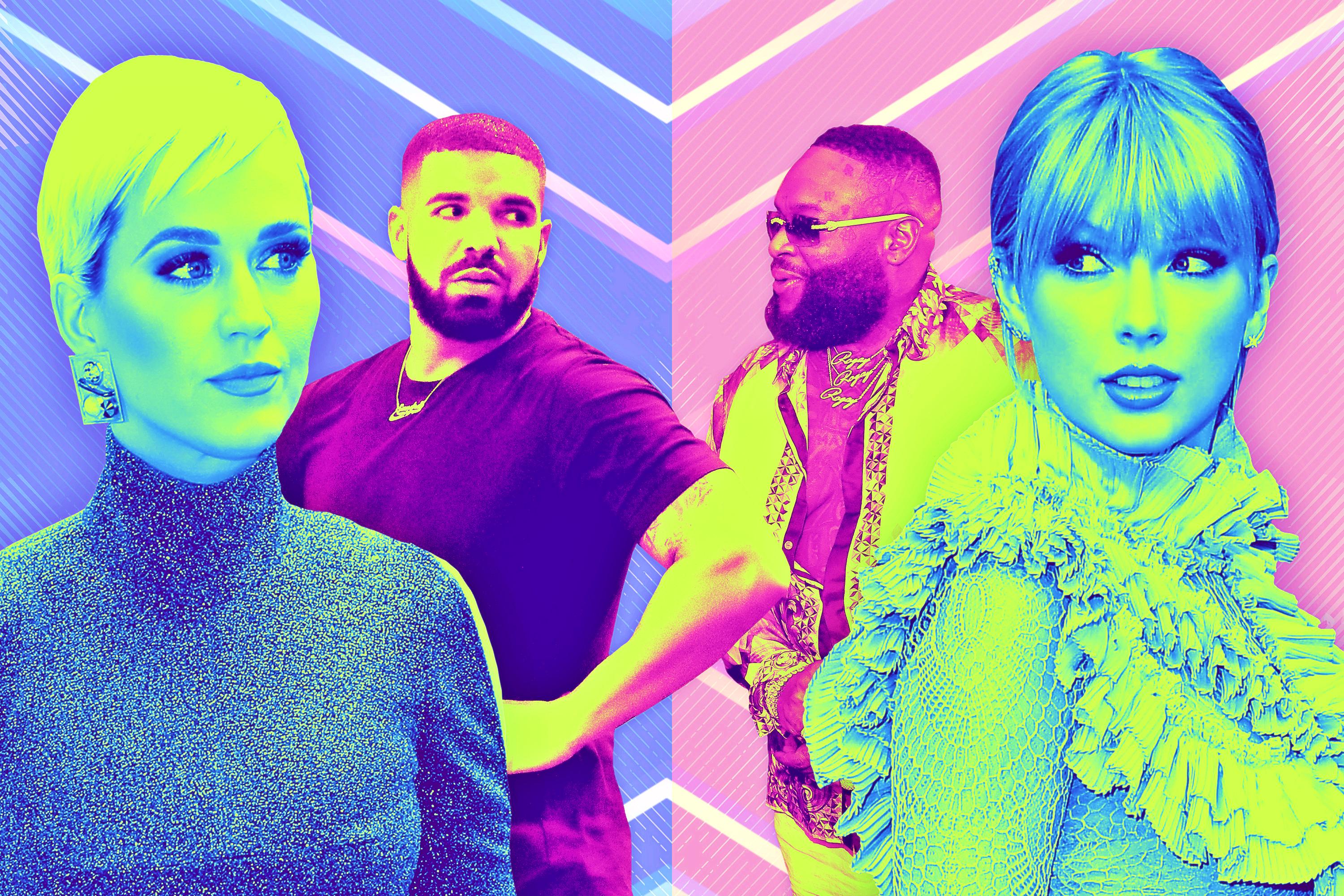
On October 27, 2005, Def Jam president Jay-Z brought Nas onstage at a sold-out Meadowlands arena in New Jersey to declare a truce in the decade’s greatest hip-hop rivalry. The announcement was, ostensibly, a plot twist: A month earlier, Jay had billed his performance in the concert with the tagline “I Declare War!” Many interpreted this as a provocation: He was emerging from retirement to settle old scores with ungrateful rappers. Presumably, there would be diss tracks, much as there had been when Jay declared war against Nas at Summer Jam four years earlier. In the Meadowlands, however, Jay and Nas stood shoulder to shoulder in a display of unity. Four years after Jay’s “Takeover,” Nas’s “Ether,” and Jay’s “Supa Ugly” transformed a personal feud into rap music’s fight of the century, Jay and Nas silently stood together on stage before the crowd with no further comment. Three months later, Jay would sign Nas to a Def Jam recording contract. Jay won, formally. They both won, essentially.
Jay and Nas suffered other hip-hop rivalries throughout the 2000s, which occurred past both rappers’ peaks, and which, in retrospect, proved the wisdom of their reconciliation. Lil Wayne succeeded Jay as the self-proclaimed “best rapper alive.” Cam’ron and The Diplomats clowned Jay—their former Roc-A-Fella Records boss—while dominating the mixtape circuit. Meanwhile, Nas feuded with Young Jeezy while whining about “ringtone rap.” Jay would close the decade with similar whining about auto-tune. In seniority, Jay and Nas resolved their differences, if only to stave off obsolescence amid myriad challengers to their commercial and artistic dominance.
More than any other artists, Jay and Nas modeled nonviolent conflict resolution as persona craft for pop stars in the modern age. They taught a new generation how to launch, resolve, and exploit a feud for maximum exposure. The template relies less on escalating hostilities than on capitalizing on them throughout the feud. In 2015, Meek Mill lashed out at Drake for employing a ghostwriter, Quentin Miller, to write his guest verse on Meek’s single, “R.I.C.O.” Clearly, Meek resented Drake’s dominance. In turn, Drake itched to prove his bona fides in a proper rap beef. The outcome couldn’t have been any crueler in its lopsidedness: Meek’s diss song, “Wanna Know,” earned a cease-and-desist letter from the WWE for its sample of the Undertaker’s entrance music, while Drake’s “Back to Back” earned a Grammy nomination. Meek lost. Worse yet, Meek ensnared a larger cast of combatants into his feud with Drake, including Drake’s labelmates Wayne and Nicki Minaj, Nicki’s ex-boyfriend Safaree Samuels, as well as Meek’s labelmates Rick Ross and Wale. While Meek withdrew from the feud in humiliation, Ross continued to antagonize Drake with a troll’s persistence. In Meek and Ross, Drake found actual antagonists who could flesh out the phantoms and straw men in his many passive-aggressive raps. But Drake’s combative phase would, eventually, prove counterproductive. Three years after “Back to Back,” Pusha T baited Drake into open conflict with him and his labelmate, Kanye West. Though Drake assumed the critical advantage, Pusha T humiliated his opponent in a diss song, “The Story of Adidon,” by revealing Drake had a son. For the song’s cover art, Pusha T found an old, startling photo of Drake posing in blackface. Suddenly, Drake was a meme in the worst way.
A reconciliation between Drake and Meek seemed inevitable once Meek was released from prison in April 2018 and became a civil rights activist and a Super Bowl mascot for his victorious hometown Philadelphia Eagles. Drake could no longer sustain a grudge against his longtime foe without risking a backlash. While on tour with Migos in September, Drake brought Meek onstage to perform his famous “Dreams and Nightmares” intro at the TD Garden arena in Boston. They dapped and smiled. “I’m happy that you are home,” Drake wrote in an Instagram caption, “and that we could find our way back to our joint purpose,” their common purpose in collaboration being, of course, to make music and money. It seemed Drake’s reconciliation with Ross would logically follow from his amends with Meek. Two weeks ago, Drake’s hometown Toronto Raptors beat the Golden State Warriors to win the NBA Finals. The following evening, Drake celebrated the occasion with the release of two new songs, “Omertà” and “Money in the Grave,” the latter featuring Ross. On “Money in the Grave,” Drake and Ross do not acknowledge their recent hostilities. The title credits speak for both of them.
Drake and Meek fought over authenticity. Drake and Ross fought for conflict’s own sake and, if anything, they fought from profoundly false motivations. They bluffed and bluffed. Drake and Ross have navigated the decade with sharply divergent commercial success; Ross endures as a statesman, but he’s become a marginal artist while Drake has sung and danced his way to commercial supremacy. They both made a mockery of “street cred.” In the 2000s, Ross feuded with 50 Cent, who sought to undermine Ross’s mafioso pretensions by mocking the rapper’s real-life stint as a corrections officer. It didn’t matter, though: The luxe-absurdist Rick Ross persona was too big to fail. The realization marked the end of 50 Cent’s dominance; his absence allowed a suburban Canadian to cosplay as a mob boss for a living. If the feud between Jay and Nas seemed too real and too ugly, then the feud between Drake and Ross seemed groundless and fictional in the extreme: fake hostilities interrupting a false, industrialized friendship. The rivalry may as well have been contractually designed.
Last week, Taylor Swift and Katy Perry resolved their own five-year-old conflict, which supposedly began when Katy poached Taylor’s backup dancers from her Red tour. It was a silly, inexplicable feud with thin justification and cynical design: Taylor and Katy seemed to be feuding for no other reason than to stoke intrigue about Taylor and Katy. “She did something so horrible,” Taylor told Rolling Stone. Taylor tried “to assassinate my character,” Katy told NME. Inevitably, Taylor and Katy’s feud outlived its usefulness. Taylor outgrew her combative phase, especially after losing a few inglorious rounds to the Kardashian household.
Meanwhile, Katy’s influence has waned given her diminished standings in the charts. Of course, Taylor’s music video for her new single, “You Need to Calm Down,” features a couple of dozen celebrities on the bill plus one surprise guest, Katy Perry, dressed as a cheeseburger and hugging Taylor Swift, dressed as a handful of fries. The fans anticipated and, in fact, demanded as much. The feud sold 1989; its reconciliation sold preorders for Lover.
Together, Taylor and Katy found their way (to use Drake’s words) back to a joint purpose: album rollouts. Of course, they’ve declined to explain what their rivalry was all about and how they finally resolved their hostilities. Their passive-aggressiveness throughout suggests some shame in each phase: the part where they pretended to be close friends, the part where they pretended to be mortal enemies, the part where they abandoned the hostile pretense for the old, friendly pretense which would resolve their long cross-promotion. Ultimately, the feuds meant nothing, though their vapidness has meant everything.

